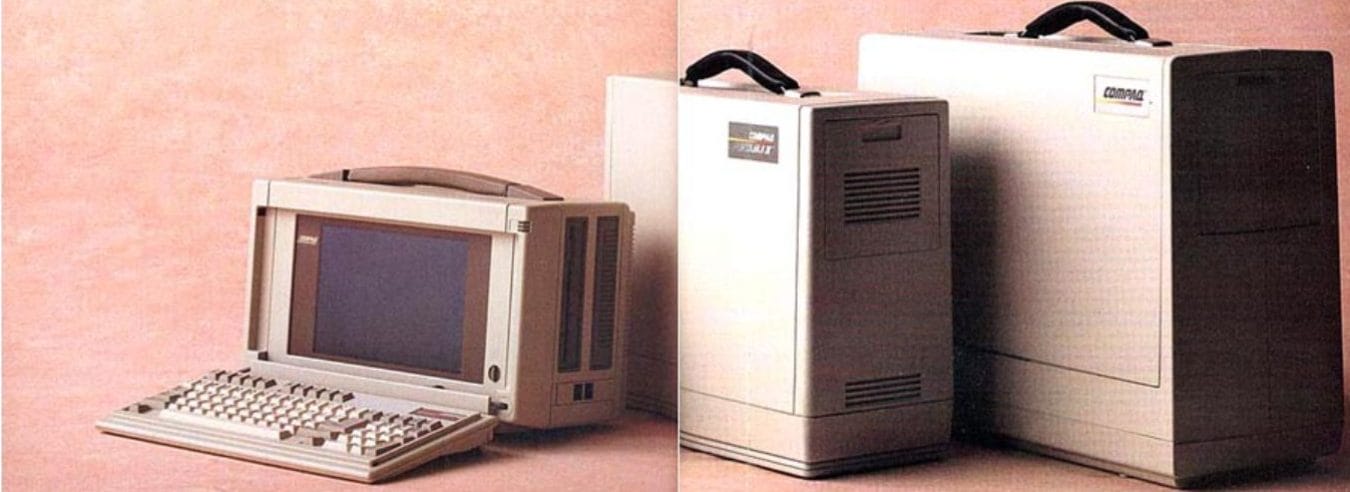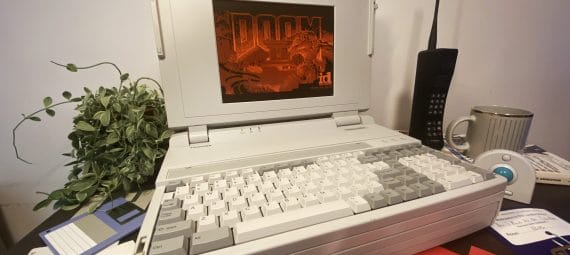If you like the IBM P75, you will love the Toshiba T6400 – one of the last portable computers to be offered with a gas-plasma display, which was becoming obsolete when the computer went on sale on sale in 1992. By this time, the magic of miniaturization had done its thing and the plasma display panel had been shrunk down to under 0.5cm thick – about half the thickness of previous plasma panels.
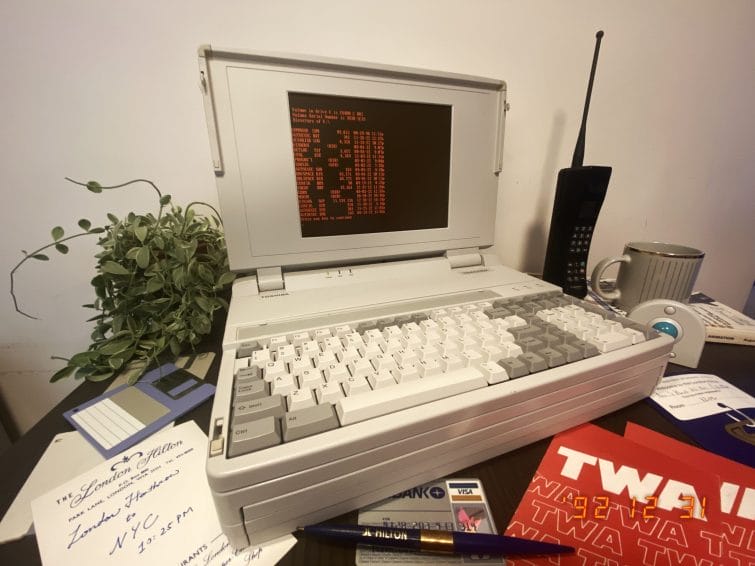
[Hero Image of Toshiba T6400, 80’s photoshoot]
Also by 1992, two years on since the release of the P75, laptops had clearly demonstrated they were the path to the future, and luggables had become viewed as unnecessarily large and cumbersome for most users. Expansion slots were pretty much the only reason one would still tote around a luggable, though the PCMCIA card has just been launched and would soon offer ISA and Microchannel cards a run for their money. All this meant that manufacturers had to develop the last generation of luggables to still be appealing and justify their heft. Benefits touted of a late-generation luggable were that it was to be your only PC, meaning that all your files and programs were on one device – eliminating the painful syncing of files through floppy disks that laptop owners typically had.

Additionally, in 1992 if you wanted a color LCD and a 486DX, you pretty much had to settle for a luggable – though the Toshiba T6400’s baby brother, the T4400SXC would demonstrate to many in ’92 that settling for an SX processor was a wise trade-off to access the tremendously lighter and compact laptop form factor, even if you were still rather limited by the paltry 2-hour battery life.

[Competing Color Laptops & luggables from 1992 – Magazine]
So enough preamble – enter the Toshiba T6400 – marketed by Toshiba to be “a mobile computer that behaves like a fully equipped high-end desktop machine”. Perhaps not a super catchy slogan, but Toshiba knew that some people would pay for the killer combo of the fastest processor combined with their favorite ISA card.

[T6400 PDF Clipping]
Several model variants were offered though the key differences were down to the processor (socketed 486 SX or DX) and display (active-matrix TFT LCD or gas-plasma). The color display model seems to have been far more popular than the plasma variant judging by eBay listings in 2022 – I have only come across one T6400 configured with a plasma display – this underscores the fact that plasma displays were definitely on the way out in ’92 and were yesterday’s technology. This made total sense as color displays had come a long way from their pioneering days a few years prior – just take a look at this Toshiba grand-daddy – the ultra-rare Toshiba T5200c – an STN-LCD with 16 extremely murky colors. 256 active-matrix color displays were now the norm, and gas-plasma had no real advantage other than price.
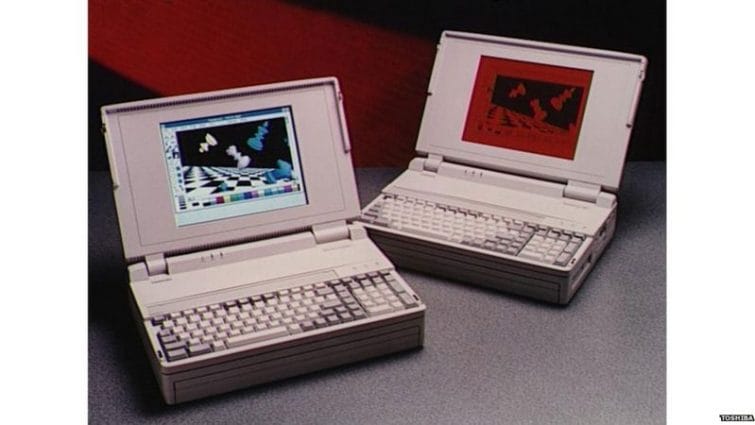
[Color T6400 & Plasma T6400 image]
Perhaps the main reason why the T6400 is my favorite plasma luggable is that for some odd reason, the Toshiba T6400’s graphics controller’s driver will report that it has 256 colors at it’s disposal under DOS Windows 95, meaning that it is perhaps the only gas plasma computer that can natively run 256 color games – take a look at these 256 color classics running in 16 shades of brilliant orange:
[Gif / Video of 256 color games running on T6400 plasma (theme hos, full throttle, Settler2, Master of Orion2, C&C, Quake, TTDlux, NFSSE, Diablo, Civ2)
If anyone knows how the T6400’s graphics card can do this, please, please let me know in the comments below!
Another neat party trick the T6400 has is its removable keyboard – allowing you to have your luggable on the table and only the keyboard on your lap – essential for gaming – I mean working on excel late at night
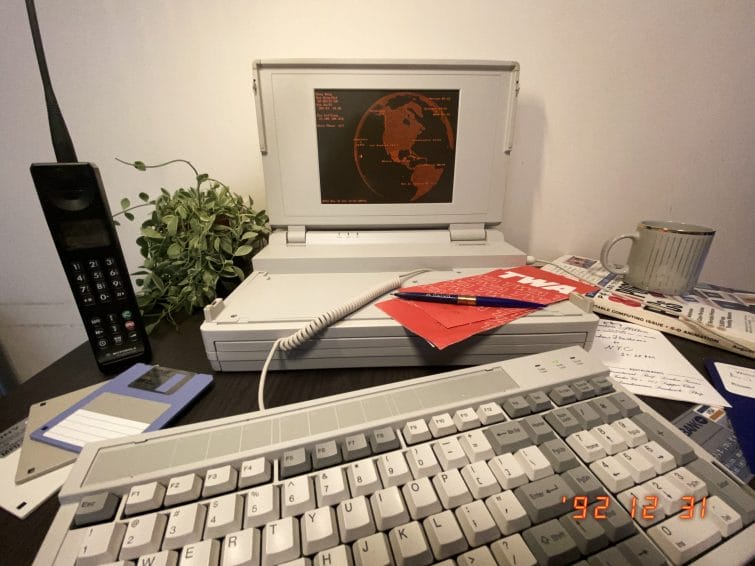
[T6400 running Win 95 Game on coffee table with the keyboard on lap image]
More important than the removable keyboard however is the fact the T6400’s CPU is socketed, meaning, that a low profile 486 CPU upgrade can be installed, though I have modified mine a bit by adding a custom heatsink to the cover to allow for enough heat dissipation.
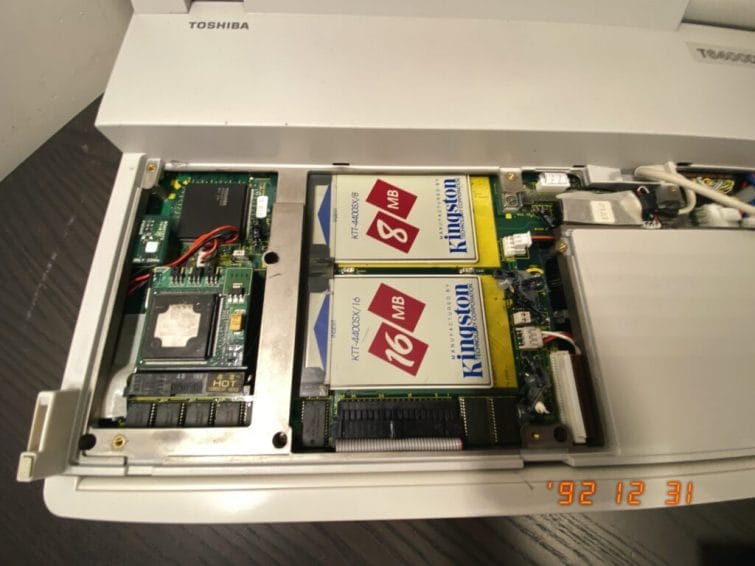
[T6400 open with CPU shot]
To truly transform my T6400 into a true Windows 95 retro-gaming battle station, I added a 2-slot ISA to PCMCIA adapter, which gives me a slot for a CF card (which is needed due to the slightly limiting 200 MB hard disk) and a slot for either my ethernet card or my CD-ROM / Sound Card combo (switched out depending on if I am installing files from network or playing games).

[2-Slot PCMCIA ISA card installed side shot, with CF adapter half inserted and ethernet & sound & CDrom next to]
Other than these amazing features and the typical floppy drive, the T6400 sports pretty run-of-the-mill connectors, including two PS/2 ports, an external floppy connector, serial, parallel, and VGA out. It also has a proprietary external expansion adapter, as did most Toshiba laptops of the time, though I have yet to ever see what these ports were actually supposed to connect to (allegedly, they were used with an external ISA backplane-in-a-box to allow for even more expandability.) RAM was expandable from the stock 4 MB to up to 28MB through credit card style RAM cards, though I was unable to install the maximum of 32MB of RAM no matter what combination of appropriate RAM cards I tried. I suppose, however, that 28MB is more than adequate for this setup. To top it all off, the T6400 has a rather smart built-in carrying handle, similar in design to that of the Macintosh Portable, allowing for easy transporting of this beautiful luggable briefcase computer.
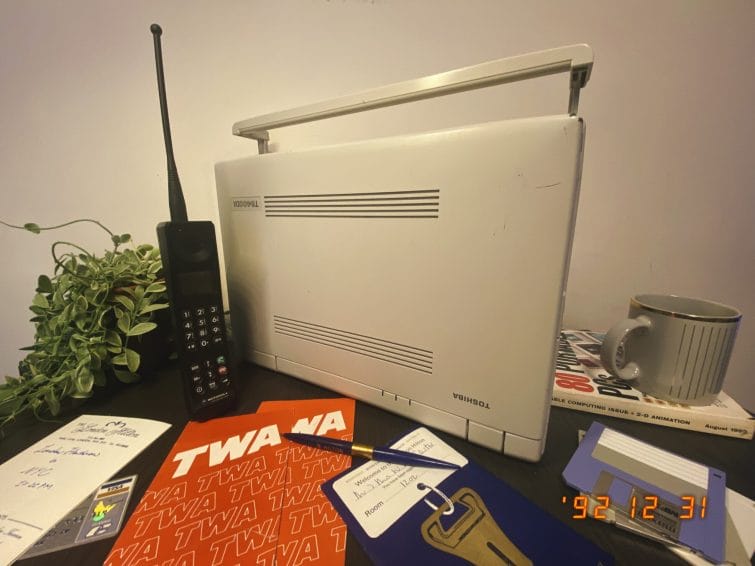
[T6400 being carried by handle, closed with black pant leg with background]
Overall, I think the Toshiba T6400 (and also to a lesser degree the T4400) are elegant and well-constructed. The feature set of the T6400 would still have been impressive compared to early laptops in the final days of the luggable. If you had a T6400, please leave your comments below – we would love to hear your stories on how you used this amazing computer back in the day.
Posted NYE 2022 – Happy 2023 to you all!
